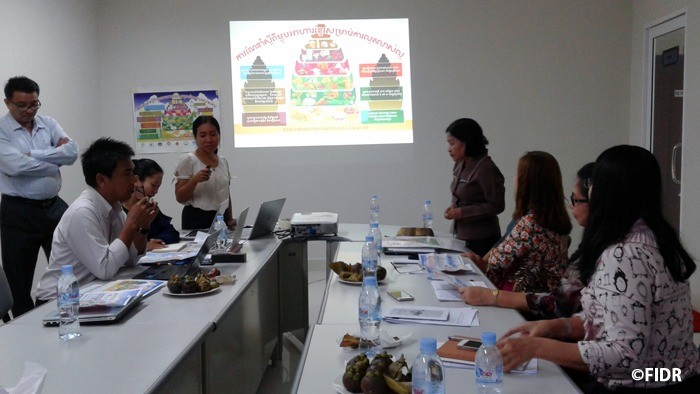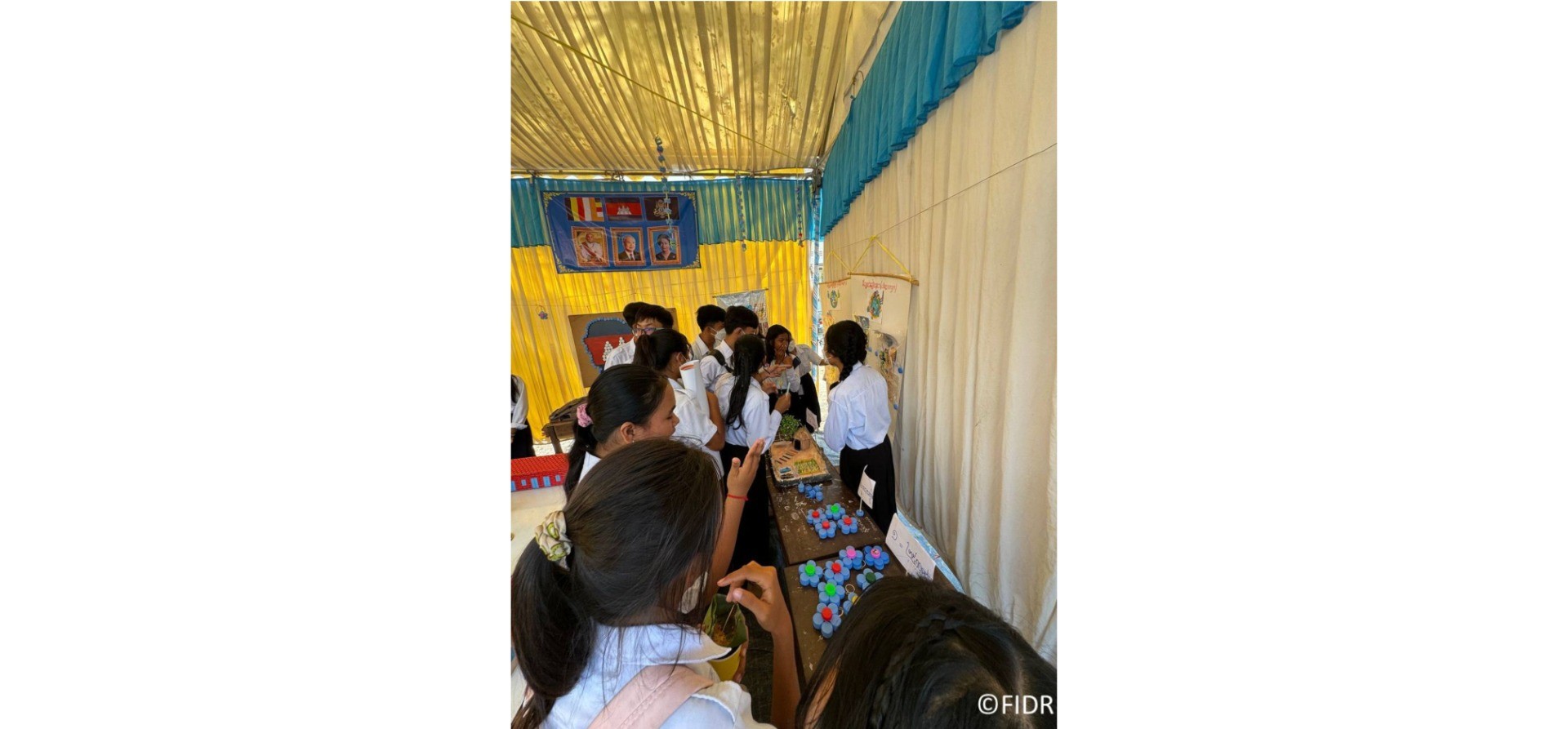For the health of children in Cambodia ~ One more step to completion of "Food-Based Dietary Guidelines "~

Working group consisting of members from Ministry of Health, Ministry of Education, WHO and National Health Research Institute discussed about design of the food pyramid and wording of the slogan.
The Food-Based Dietary Guidelines (FBDG) consists of several simple slogans which are easy to understand by everyone and a food pyramid showing what and how many food should be eaten to have a healthy eating habit. According to the "World Declaration and Plan of Action for Nutrition" adopted at the International Nutrition Conference held in 1992 co-hosted by the United Nations agency WHO (World Health Organization) and FAO (United Nations Food and Agriculture Organization), Dietary Guidelines should be established by each country to promote appropriate eating habits and lifestyle habits for their own citizens. On the FAO official website where the dietary guidelines of each country are introduced, among 29 member countries of Asia Pacific region, only 17 countries mainly developed countries are represented their dietary guidelines.
However, there is no Cambodian name in that. In order to establish the guideline, it is necessary to have clear information about dietary habits and nutritional condition based on scientific evidence, then repeat the verification of the contents many times. But in Cambodia where there is no professional nutritionist, no training institution about nutrition, the expertise, labor, time, and funds are strongly necessary. Therefore, the establishment of dietary guidelines has been postponed for a long time.
FIDR has conducted the project on introducing hospital diet and nutrition management systems and human resource development at Cambodia National Pediatric Hospital since 2008, so FIDR have established a good relationship with the Ministry of Health of Cambodia. With their trust, FIDR received a request from Ministry of Health to support for the formulation of food dietary guidelines in 2013.
In order to create a food dietary guideline, a "recommended dietary allowance - RDA" (dietary reference intakes) is required by each country to indicate how much nutrient should be taken per day. Since this RDA does not even exist in Cambodia, a “recommended dietary allowance” is required to be formulated firstly, by conducting the nationwide survey from 2014, beginning with researching the dietary intake situation and nutritional status of the target population in Cambodia.
This activity is the first challenge not only of Cambodia but also of FIDR, so we had to steadily proceed the formulation of guideline with precious advices from Japanese experts. (Reference: Past Articles). Additionally, in order to disseminate the Food Balance Guide, we also created some teaching materials such as posters, pamphlets which are easy to understand, then conducted a pilot study with elementary and junior high school students in urban and rural areas. Based on the research and study results as well as advices of working group members and other experts, we revised the contents many times to have a good product.
It is really a difficult journey until everyone who are involving in the formulation of the dietary guidelines could say "We all agreed! Let's go with this!".Now, after three-year from the beginning of the project, finally we have one more step further to submit the guidelines to the Ministry of Health.
"Let’s try for One more step!"
Our members of the project team are encouraging each other and working on our best for the health of children in Cambodia.
Other Activity Reports
-
Pediatric Surgery Project

2025.11.11
Transforming Surgical Care at ...
Cambodia Medical Care International Cooperation for Social Development -
Nutrition Education and Promotion Project

2025.10.09
From Shokuiku to Sankranta Day...
Cambodia Health anbd Hygiene Nutrition Education International Cooperation for Social Development
DONATION
Your generous donation now will have impacts
on children and communities in our fields.














